There is only one stage in the true model of the Creative Process. At the simplest level, creativity is the act of being and doing folded into a state of flow called life. I claim that we naturally spend all of our time in a state of flow, despite claims in the popular press to the contrary. Even when we’re analyzing a problem (in the Identity stage), we’re DOING something (in the Building stage), and employing tools of some sort (in the Using stage). We simultaneously embrace a rapidly evolving picture of what we want to do that unfolds just before we do it (in the Vision stage). See, it all folds together into one. What the popular press describes as a state of flow occurs when the execution of the creative process becomes jubilant, and consequently high performance.
We divide the Creative Process into pieces in an effort to understand and picture the complexity of the entire process. But let’s not fall into the trap of believing that we actually execute the pieces in some sort of lock step fashion. It’s convenient and instructive to perceive that creativity has certain stages, and that we can all emotionally, physically and mentally relate to these stages, but to hold any model of the creative process as a precise description of creativity, and to force others to adhere strictly to its application is foolish. Stuart Kauffman uses an expression to describe the difficulty of modeling any living system: “the algorithm is incompressible.” In other words, there’s no shorter method, routine or program to describe life or living systems than life or the living system itself. Models are representations of reality but they are not the reality itself. There is no algorithm or equation that we can force creativity into that is shorter than the creative act itself.
Bryan Coffman when at MG Taylor Corporation, referring to stages in the MG Taylor DesignShop process | View source
Now-to-New project model — Version 1, 1990s
There is more to this model than meets the eye. Adoptability and implementation factors are considered when evaluating ideas, and Now is compared with New throughout. Generally, New remains constant while Now progresses, but New can be redefined.
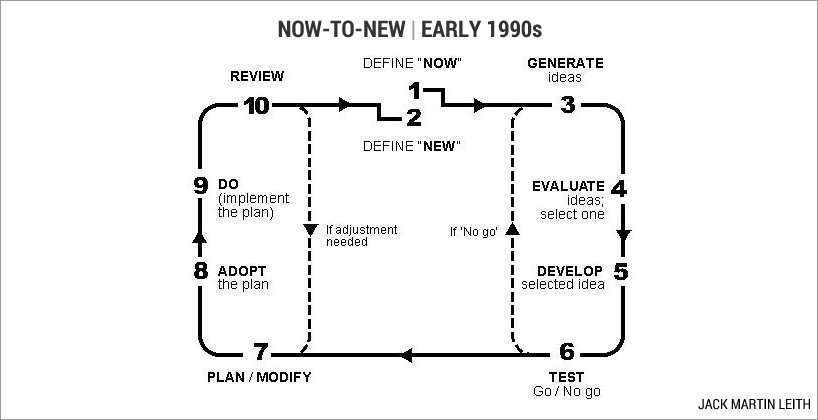
Version 2 — 2000s
Non-linear.
Focus is on system-wide value generation.
Considerable but unintended overlap with generic design thinking approach:
- Specify Requirements corresponds with the design thinking phases Empathise and Define
- Design Concepts corresponds with Ideation
- Conduct Experiments corresponds with Prototype and Test
- Make Plans corresponds with Implement
- Take Action corresponds with Implement
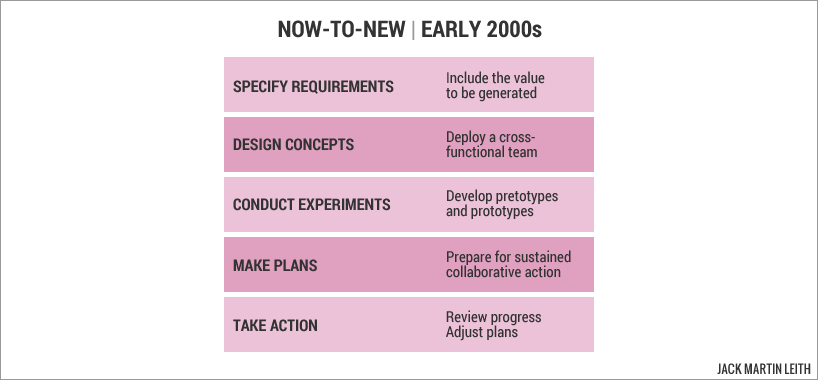
Version 3 — 2010s
The Creative Lifecycle, analogous to human procreation, development and maturity.
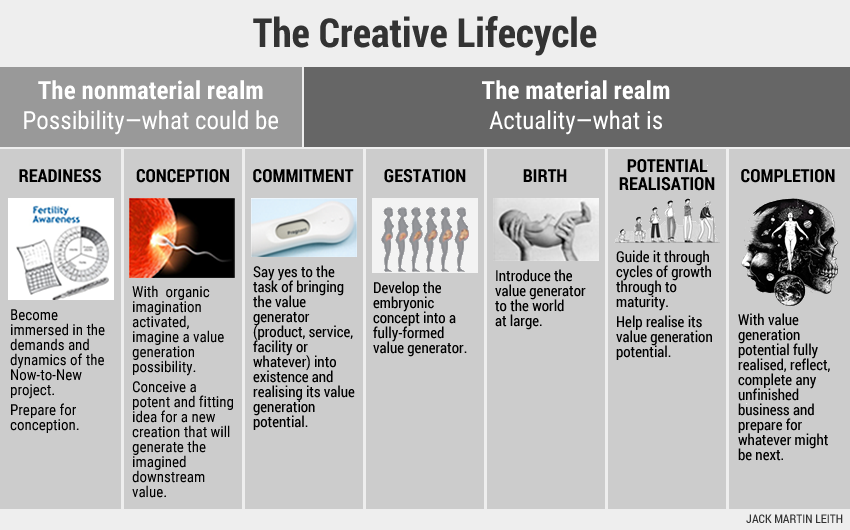
Version 4 — 2025
An embodied Now-to-New process.
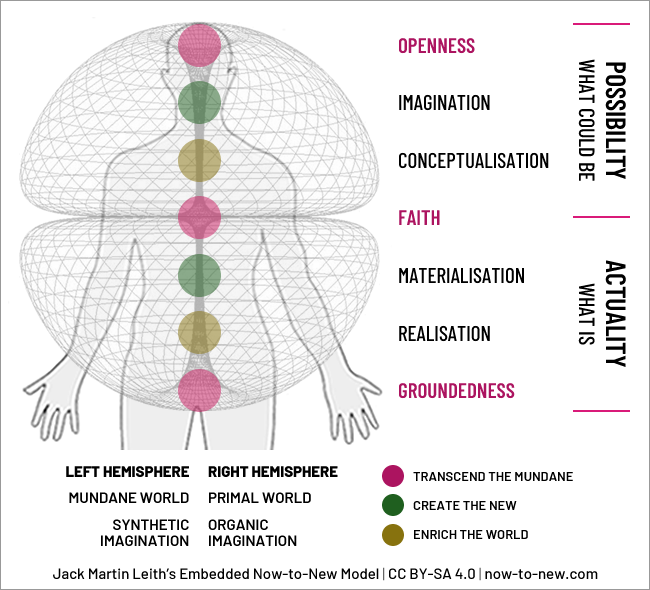
Dual-torus image sourced from Michael C Grasso and decoloured
Each of the seven constituents is associated with a specific location in the body.Faith is not used in a religious sense but rather with the meaning described in the passages below.
Together, Openness, Faith and Groundedness represent a state of being in which the creative faculties of Imagination, Conceptualisation, Materialisation and Realisation of potential are fully activated and ready to be deployed.
Faith is a critical but curious mind’s readiness to adopt a reality model (even if provisionally) for which there is less than absolute, empirical proof.
Jay B. Gaskill, The Dialogic Imperative
Faith is an existential commitment of the heart, a way of life, a set of behaviors and emotional responses woven into every hour of everyday life — expressed through constant choices both when alone and in social situations.
Peter A. Georgescu, Faith isn’t irrational, but beliefs may be, on Huffington Post | Peter A. Georgescu is Chairman Emeritus of advertising agency network Young & Rubicam, Inc.
The Creative Lifecycle combined with the embodied process
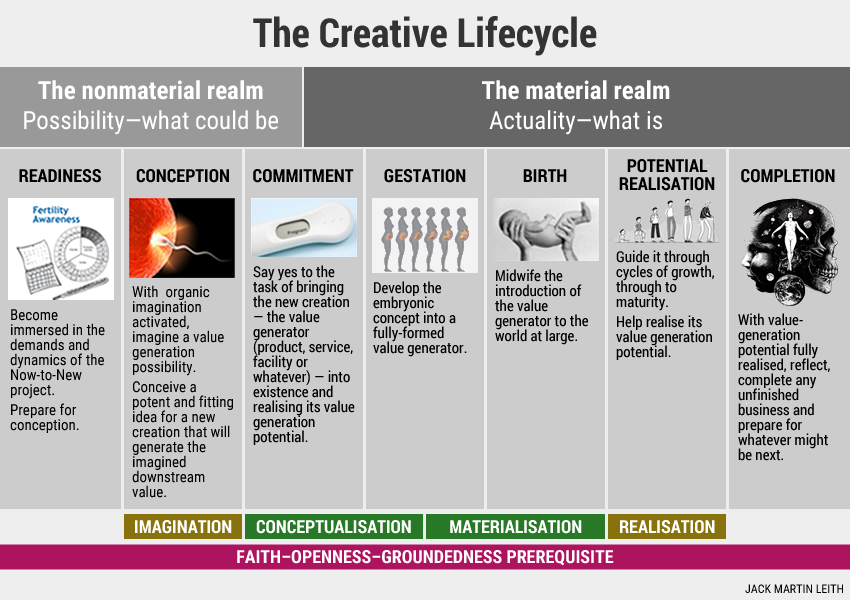
Continue reading
Some open source and proprietary Now-to-New methods
How the term Now-to-New came into being
Readiness work sets the Now-to-New project in motion
The seven kinds of Now-to-New work
The three Now-to-New action modes — Part 1
Search the site
Not case sensitive. Do not to hit return.